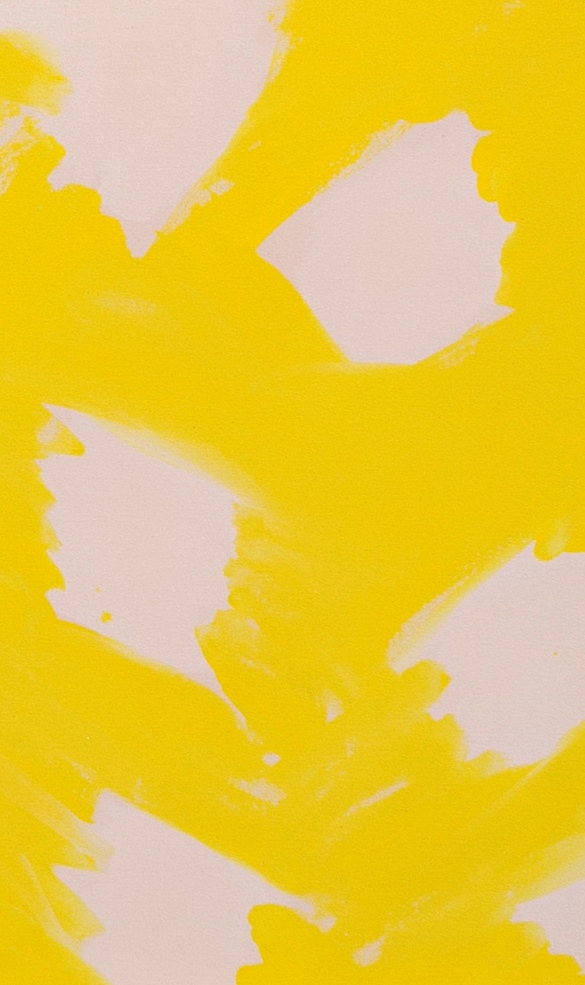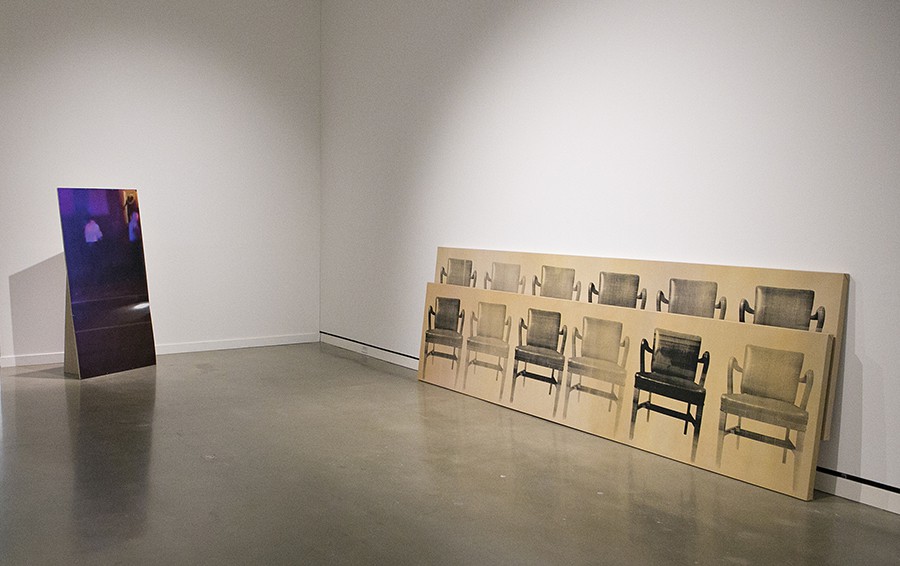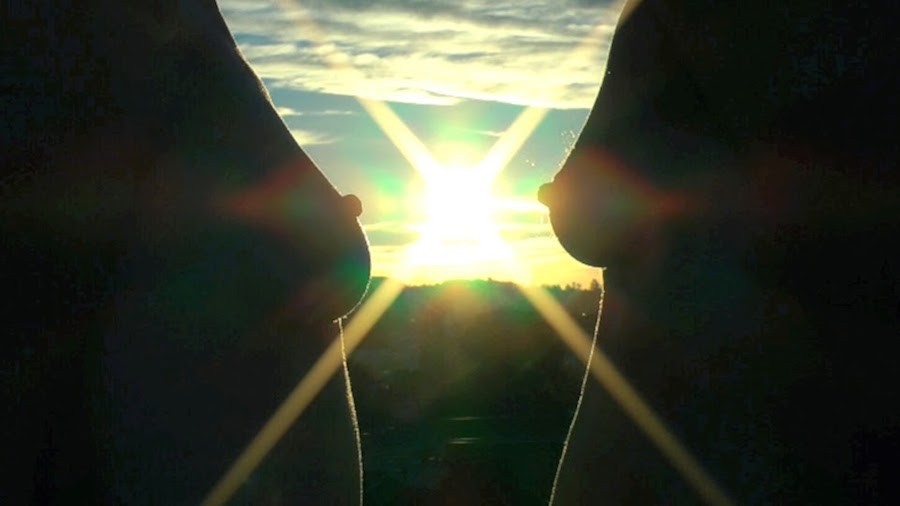Terrible Beauty in a Flawed System
Amanda Curreri's provocative work across media sits at the intersection of contemporary art, activism, and history as a meditation on justice — frayed, flawed, and too often absent in American life.

Amanda Curreri: The Calmest of Us Would be Lunatics at the Rochester Art Center presents a challenging and provocative exploration of social justice issues from both historical and contemporary perspectives. Filling the main galleries, Curreri’s disparate visual interests around the topic are brought together by the thoughtful organization of Susannah Magers, the center’s Curator of Art and Public Engagement.
Curreri is a collaborative artist working across media at the intersection of art, activism, and history. The viewer is introduced to her variable approaches in the first gallery, where history, research, and contemporary art pieces collide. Her collaborative effort with the Jean-Nicklaus Tretter Collection in Gay, Lesbian, Bisexual and Transgender Studies at the University of Minnesota is showcased here. A vitrine is filled with artifacts from that collection, while contemporary responses made by Curreri encircle the walls. Vibrant color is used consistently throughout the exhibition and, in this space, large colorful banners, reminiscent of those used at protest marches, confront viewers. This gallery serves to give insight into who Curreri is as an artist, her interests and some background that will later help the viewer to connect with some of her more esoteric works in the exhibition.
Upon entering gallery two, the viewer is confronted by Jury Box (2010), two nearly life-sized screen prints of chairs from a jury box, stacked one against the other as two rows of jurists would be seated in a courtroom. The chairs are old and noticeably vacant. On closer inspection, the construction of the two main images is flawed. Consisting of tiled screen prints, they are uneven and inconsistent, showing imperfections. How should we read this piece? Is justice absent, or waiting to take a seat? Is our system time-honored or flawed and frayed? This piece, its meditation on justice, pulls the disparate images in the room together, most notably an appropriated image of Jamar Clark, a young black man shot to death in Minneapolis by police in 2015 and whose killing triggered intense public protests. Blown up beyond readability, the size of a person standing in front of the jury, the image of Clark itself appears to be on trial. The irony is that this young man was not allowed the rights to a trial by jury, but was instead tried on the street, his punishment capital without a verdict.

It is nearly impossible to see the victim within the image. Those details are laid out in accompanying title text instead:
Warning–Graphic: We have uncovered video of Jamar Clark moments after he was shot in the head by Minneapolis police. At the 29-second mark you can see Jamar’s body appears to be lifeless on the ground with his hands in handcuffs, just as numerous witnesses have reported from day one (2016).
What can be seen are a white shirt of a white man and a blue shirt of a police officer, the street laid out before them, presumably with Clark’s body. However, the viewer’s eyes are drawn to a black couple in a doorway. Appearing to embrace, light streaming behind them, they seem stalwart against home invasion, their presence lending a sense of humanity and community as they stand as witnesses to the injustice.

One of the most aesthetically pleasing pieces in the show is Prime Time (2013), a video loop shown on a large screen television in a darkened room, gallery three. Two unclothed female torsos shown in profile frame a sunset captured as a cross of light between them. The light bounces across nipples and breasts, fading into digital image distortion. The bodies breathe, tense with the effort to uphold their poses. Details are captured by the sunlight – the soft fuzz of hair on their breasts and bellies illuminated by the hard rays. It is a common art cliché to show nude female bodies, specifically for a male gaze. Here they confront one another, expressing powerful attraction yet not touching, threatening combustion like the energy of the sun surrounding them. We dare not look at the image for too long, yet we are compelled to look closely, as if drawn in to be the third point on a triangle. As contemplation on the inevitability and profound beauty of attraction, Prime Time sits a bit at odds with the work in the adjacent room. After being immersed in the ugliness of injustice, this piece suggests possibility, even aspiration. Together the works in the two rooms suggest a terrible beauty, one almost too potent to look at, within our flawed system.
It is refreshing to see activist art that does not rely on didacticism, however it is a leap to rely on abstraction to successfully convey a message without offering the viewer more entry points.
Gallery four feels to be the most disjointed of the exhibition spaces, as the statements made through the work are less clear, however aesthetically the room is held together with bold use of color and careful placement of the different projects. The Eff (2014-15) series of abstract paintings are responses to historical moments in social history or individuals. Although artistically appealing, these are the most opaque statements presented in the exhibition. Aside from Eff (Tommie Smith) (2015), which incorporates an image from the athlete’s Olympic Black Power salute, the abstraction employed in the paintings keeps their subjects quite distant from the viewer making the ideological connections feel stretched. It is refreshing to see activist art that does not rely on didacticism, however it is a leap to rely on abstraction to successfully convey a message without offering the viewer more entry points.

An installation of mussel shells, Mussel Sticks (Noise Makers) (2015-ongoing), also takes up residence in gallery four. Remnants left from an ongoing series of dinners organized to create community within the art space, the shells are hung from uplifted poles to reference protest marches lead by Italian-American anarchists, Sacco and Vanzetti (controversially executed in 1927 and the subject of an additional artwork in gallery two). Text on the wall exclaims, “We cannot live on clams alone.” A coming together to share in conversation about art and politics, the CLAMS dinner will be hosted by the artist and attended by local participants in late March, although what form this event will take and its intention is unclear. It will be interesting to return to the galleries after the event to see how the residual elements of the performance are displayed.
The final gallery in the show is dedicated to the collaborative group ERNEST of which Curreri is a member. Like her solo work, the video presented, Demos: Wapato Correctional Facility (2015), is challenging to the viewer. Visually stunning, the video is a layered investigation of the defunct Wapato correctional facility in Oregon. Using surveillance cameras and infrared capture of a lone coyote wandering through the facility, the video only stumbles when fresh, clean high definition footage is incorporated. The footage from the video cams provides a distancing mediation, embodying our voyeuristic experience of the defunct prison, whereas the newly shot HD is jarring. It feels too clean, almost abstract by comparison while reminding the viewer too obviously of the art-making process. That said, this piece nicely ties together the exhibition, coalescing themes of isolation and despair inherent to a criminal justice system we’d sooner like to forget exists.
“The challenge in using art to deal with social history is to keep it alive,” says Curreri in a video interview accompanying the exhibition. Her focus is not on telling the viewer what to think about complex social issues, but rather to provide an opportunity and forum for exploring these ideas through the lens of artistic interpretation and dialogue. The Rochester Art Center has done a terrific job of providing a contextual experience of Curreri’s multiple projects, while leaving their messages and meanings open to interpretation.
Related exhibition information: Amanda Curreri: The Calmest of Us Would be Lunatics is on view at the Rochester Art Center through May 8, 2016. Check the website for ongoing events throughout the exhibition.